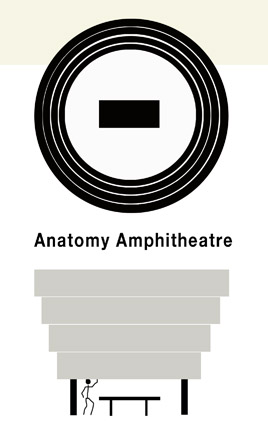Aeschylus the Greek (525-455 BCE) ordinarily gets the credit for inventing drama. Speakers had always addressed groups of listeners, and often the speaker told a story, sometimes as the entire performance (as in Boccaccio’s Decameron), other times as part of an expository or persuasive speech or argument (as with The Wife of Bath). At some point we can imagine a speaker doing what standup comedians often do: present two characters in conversation and act out both parts by turning left and right delivering lines for each character.
Aeschylus gets the credit for having actors speak for the characters and act out events that take up positions along some story line. It’s performance narrative.
For listeners it’s a whole new way of having a story told. A whole new experience. We expect a story with a challenge in it. We have to follow the dots and assemble the story as pieces arrive over time. The pieces do not have to come in their order of occurrence, and occasionally we get something that’s only distantly related to the main narrative line. The whole process can resemble a wacky assembly line.
Because there’s mystery involved, a continuing mood of uncertainty as we make our best guesses at what the story’s all about and Aeschylus stands smiling out of our view determined never to say to any of us, about our hypothesis, “You’re right!”
It’s a fuller, richer, more complicated and uncertain experience than humans ever had before. We certainly took to it, because theaters have proliferated through many cultures around the world. What’s more, dance troupes, opera companies, mimes and puppeteers devise narrative performances that challenge audiences in many different ways, and for the past century and more the movie industry has made dramatic narrative a mass medium. We love this kind of guessing game while we also love to see how characters on stage or screen respond to their experiences, make use of their experiences and sometimes become quite different people as a result of their experiences.
 The typical anatomy amphitheatre of the Renaissance is a grisly and intimate setting for public dissection of cadavers.
The typical anatomy amphitheatre of the Renaissance is a grisly and intimate setting for public dissection of cadavers.